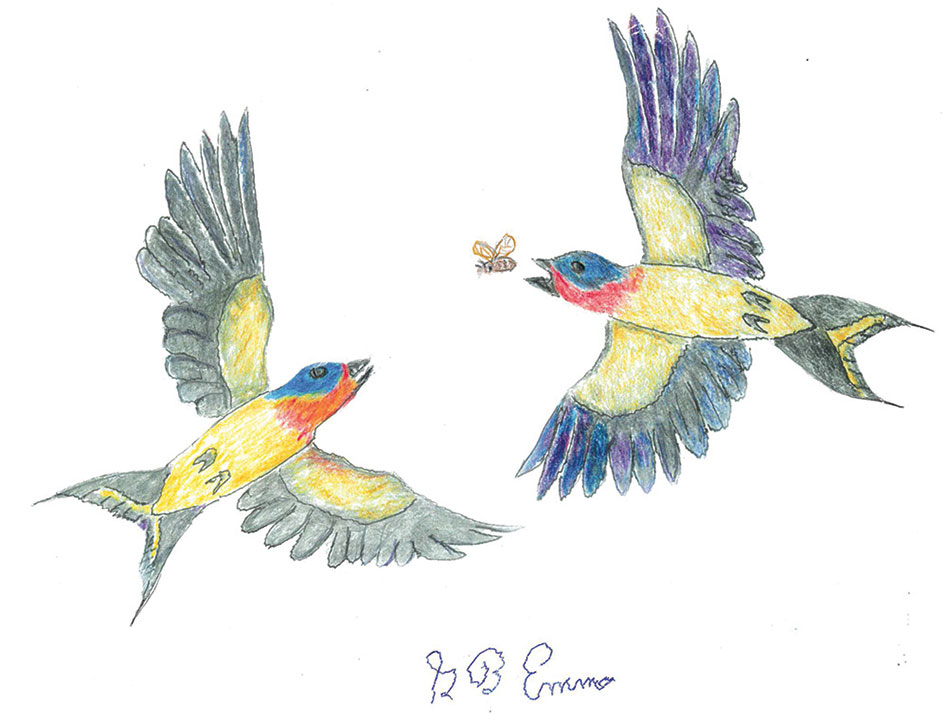The Barn Swallow is one of the most active insect and mosquito predators, fortunately well distributed around most of the natural world. It is very common everywhere across the continents of Europe, Asia and Africa, and it patrols the biggest part of the northern hemisphere.
It ranks in public opinion as one of the most essential, bottom-line benefactors for a healthy environment of insect control. In the fall, all the Swallows migrate to the southern hemisphere.
As in my illustration, it also ranks as the best, eye-catching flying predation as it swoops and dives, skimming across the water to catch and eat in one graceful motion of predatory flight.
Across the shoreline of Buzzards Bay, the Barn Swallow favors finding a nesting home under manmade buildings and overpasses, especially under the roofs of horse and cow barns. The coming of Swallows to our shores have always been a natural sign of the arrival of the spring season.
Under one of the overhead structures, they usually build a cup-shaped nest out of grass and loose feathers, using their own mixture of mud pellets to cement it to the overhead. Over the years, the construction has been known to be repaired again and again over a long tenure.
The nests survive the passage of time by standing as welcome shelters for their continued return, using the homing instinct like this homecoming phenomena inspired the writing of the popular love song you most remember: “When the swallows come back to Capistrano, that’s the day I pray you’ll come back to me.”
In nautical literature, ancient mariners painted the arms with tattoos of Swallows as a positive omen of safe return after thousands of miles around the world. In medieval culture, the Swallow was believed to be descended from the eternal spirit of nightingales. Today, the Swallow is depicted on postage stamps in many old-world countries and has been the national bird in Austria since 1969.
Recognition on a national basis is the highest tribute of public opinion of the Barn Swallow that I have written about and illustrated to earn your recognition and positive evaluation of what has been a normal, common phenomenon that attracts your unexpected attention and understanding.
What more can I say and illustrate for your entertainment?
By George B. Emmons
